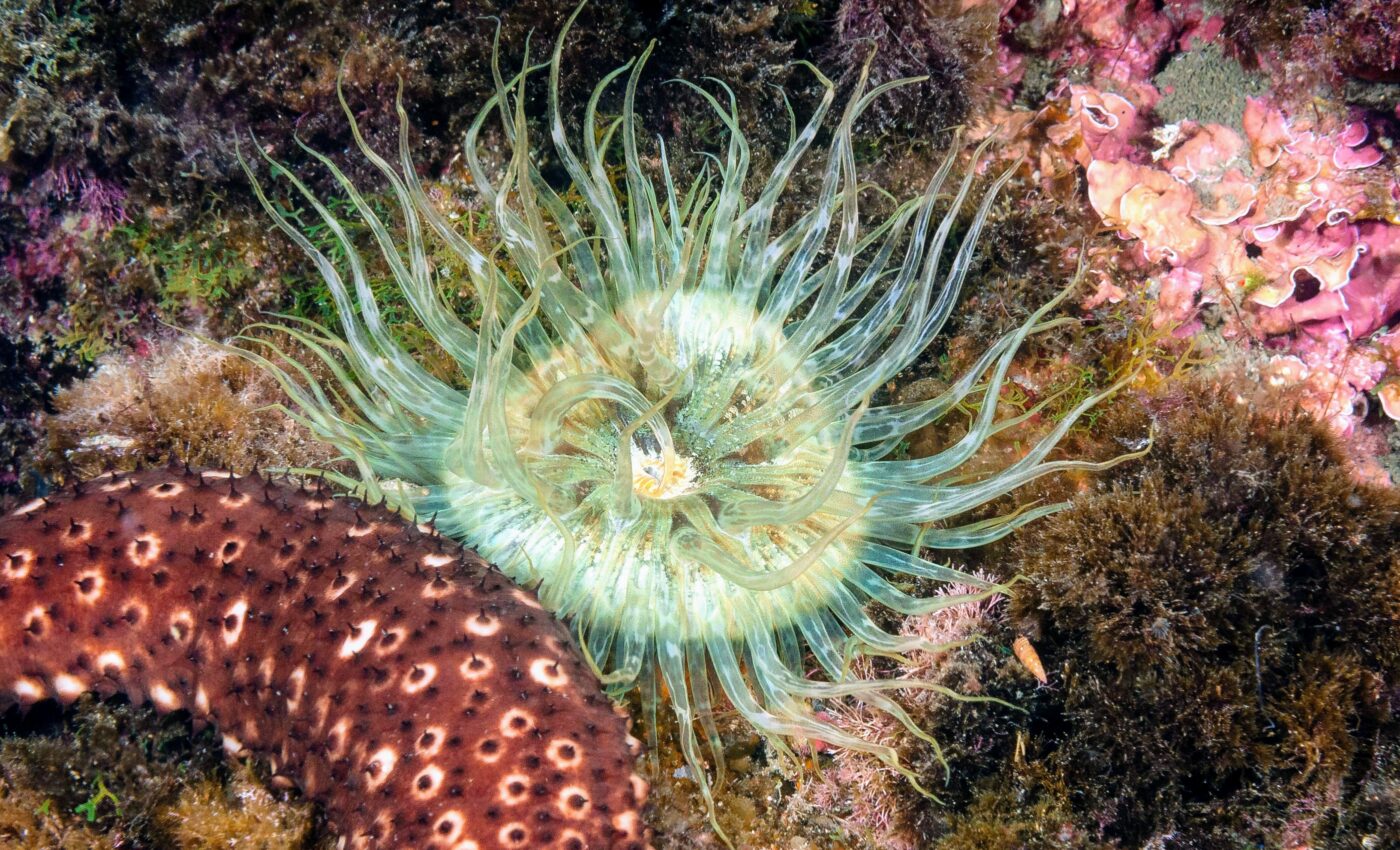
Did early animal evolution start with predatory behavior?
Were the earliest forms of animals more inclined towards a predatory nature or passive filtering like sponges?
A new study on sea anemones may offer some answers. The research indicates that the evolution of sea anemones, and potentially the early evolution of multicellular organisms, was significantly shaped by a predatory lifestyle.
Predatory larvae
The study, which was led by Dr Thomas W. Holstein of Heidelberg University, was focused on the young life stages or larvae of the Aiptasia sea anemone.
Contrary to previous beliefs, these larvae actively hunt and feed on live prey. They do not rely on algae as previously thought. Using specialized stinging cells and a rudimentary neuronal network, these larvae capture and devour their prey.
“In its simplest form, the gastrula develops from a hollow sphere of cells, the blastula, forming a larval stage with gut and mouth; imagine pushing a ball inwards at one side. All animals pass through this gastrula stage, which could also have existed at the beginning of animal evolution,” said Dr. Holstein.
A model organism
The Aiptasia sea anemone holds significance as a model for researching endosymbiosis in corals and other cnidarians.
“Corals live in nutrient-poor waters and as larvae or young polyps, take up symbiotic algae cells. In Aiptasia, however, this process is important for adults but does not lead to growth and settlement of the larvae, suggesting that nutrition is a critical step in closing the life cycle,” said Dr. Holstein.
Ira Mägele, a member of the research group, provided crucial evidence. She found that even in the late gastrula stage, Aiptasia larvae actively use their stinging cells to hunt prey that matches their size, subsequently consuming and digesting them.
Relevance of Aiptasia
While corals, especially in nutrient-deficient waters, absorb symbiotic algae cells during their larvae or young polyp stages, Aiptasia doesn’t show this reliance during their larval phase.
According to the researchers, lab studies of the nutritional conditions showed that the food for the tiny Aiptasia larvae had to be small enough and alive. Nauplius larvae of Tisbe copepods are 50 to 80 micrometers – a similar size to Aiptasia larvae – making them an ideal food.
Under these conditions, larvae grew consistently, later settling and undergoing metamorphosis into primary polyps.
“In this way, we were able to grow mature polyps as well as their descendants for the first time,” explained Mägele.
“By thus closing the life cycle of Aiptasia, it will finally be possible to carry out necessary molecular genetic experiments required for functional studies on this key endosymbiotic model organism,” noted study co-author Dr. Elizabeth Hambleton.
Redefining the gastrula hypothesis
Dr. Holstein’s findings challenge the long-standing gastrula hypothesis first proposed by evolutionary theorist Ernst Haeckel in the 19th century. While Haeckel imagined the gastrula as a passive, particle-filtering entity similar to sponges, the Aiptasia gastrula tells a different story. It showcases a predatory lifestyle with specialized stinging cells tailored for hunting.
This predatory nature, which is also found in some single-celled organisms and simple worms, might have been pivotal in the evolution of multicellular organisms, potentially even spurring the development of sophisticated nervous systems.
The study is published in the journal PNAS.
Like what you read? Subscribe to our newsletter for engaging articles, exclusive content, and the latest updates.
—-
Check us out on EarthSnap, a free app brought to you by Eric Ralls and Earth.com.













